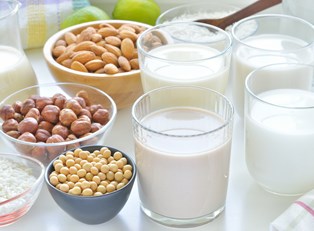If you are unable to fully digest the lactose (sugar) in milk and other dairy products, this means you are lactose intolerant. Even though lactose intolerance is relatively harmless, the symptoms can be very uncomfortable. Though these symptoms are easily recognizable in yourself, they might be harder to detect if your child is suffering from lactose intolerance.
What are the symptoms of lactose intolerance?
Symptoms will usually start about 30 minutes to a few hours after eating or drinking foods that contain lactose. The common signs of lactose intolerance include:
- Bloating
- Gas
- Diarrhea
- Stomach cramping
- Nausea
If you notice your child experiencing these symptoms after eating or drinking dairy products, they might be lactose intolerant. The most common confusion parents face about this condition is mistaking it for a milk allergy. Even though milk allergies and lactose intolerance share similar symptoms, they are completely different, since milk allergies involve the immune system while lactose intolerance is a digestive problem.
How can you tell if it's lactose intolerance?
One generally effective way to see if your child is having trouble digesting lactose is to remove all milk products from your child’s diet for two weeks. If symptoms improve, slowly reintroduce dairy to see if symptoms return. The only problem with this method is that many non-dairy foods still contain some lactose, so it may be difficult to remove all of these from your child’s diet.
There are also some medical tests that can be performed by a pediatrician to confirm that your child is lactose intolerant. One that is commonly used is known as the lactose breath test, or hydrogen breath test, which involves measuring hydrogen levels in your child’s breath after they have swallowed a lactose solution. For someone who is not lactose intolerant, hydrogen will only be found in low levels. However, lactose intolerance prevents lactose from being properly digested, which means it will ferment in the intestines and produce hydrogen that is exhaled through the lungs.
Additionally, your pediatrician may refer you and your child to a gastrointestinal specialist. Sometimes, a sample from the small intestine will be taken during a diagnostic endoscopy in order to measure lactase and other enzymes.
What will help lactose intolerance?
Even though there is no cure for lactose intolerance, there are dietary changes you can help your child make that will make a significant difference. Since lactose intolerance is often linked to a lack of the enzyme lactase, taking over-the-counter lactase right before each meal may help your child digest foods that contain lactose.
There are also foods that are lactose-free or lactose-reduced that you can offer your child to help minimize the symptoms of lactose intolerance. Since lactose intolerance doesn’t necessarily mean that you can’t handle lactose at all, often just reducing the amount that your child consumes can be a big help.



